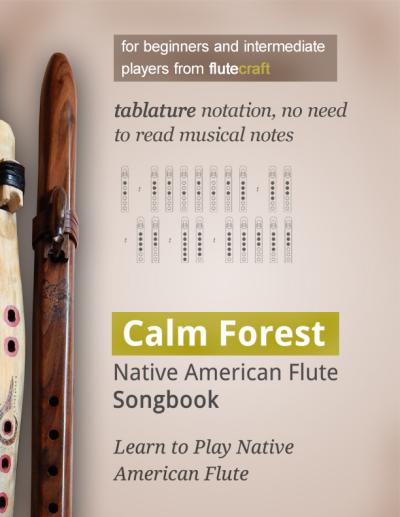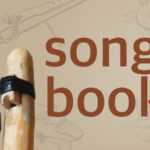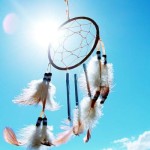Music theory is universal – there is no such thing as “different music theory for different instruments”. Music theory and note reading apply to all instruments and all musical genres. That said, sometimes it’s easier for people to learn both theory and notation when they are given a book explaining these subjects in the context of a specific instrument. In addition, not all parts of standard music theory and notation reading apply in case of playing Native style flutes, even when played with other instruments.
Thus, I want to offer you a short series of tutorials explaining the basics of music theory and music notation with Native American flute in mind.
I decided to simplify this series of tutorials as much as possible, yet not so much that you would not learn everything that one must know about music theory and notation. I wanted to find the middle ground between necessary knowledge and simplicity.
The main goal of this series is to teach you how to read traditional and universal music notation, and understand what you’re reading and why we do things the way we do. Thanks to this knowledge:
- You’ll be able to write down your music using standard notation, so other musicians can play it.
- Read music written by others and play it.
With this, you’ll be able to play with other musicians, although let’s make this clear: learning theory and notation is one thing, but mastering this requires a lot of practice.
Now, I will mention Nakai’s notation once again (since there are mentions of it within other articles on FluteCraft), but what I’m going to teach you will be universal music notation. For example, Nakai’s notation uses four sharp symbols. I will mostly use three sharps in order to represent actual key of F# minor. Don’t worry if you don’t get it just yet. I will explain everything.
Let’s start.
1. Staff and Registers
Let’s start with the basics. We write music on a staff. Figure 1.1 shows a staff, made of five horizontal lines. On these lines, and between these lines, we place notes – written representations of sounds. The vertical lines are bar lines. They divide our music into equal parts. The thick, short horizontal lines in the middle of each bar can be ignored for now (consider them rests, when no music is played, only silence).

Figure 1.1 – A Staff
Now, take a look closer at figure 1.1. This figure shows a weird symbol on the left. It is a clef. A clef is a symbol that tells us the register of the notes on this particular staff. There are three basic clefs: alto, treble and bass clef. So far, all of this is used to notate music for Native style flutes.
Figure 1.2 shows the treble clef. Treble clef represents a higher register, where the note’s pitch is medium to high. Almost all Native style flutes play within registers represented by this treble clef.

Figure 1.2 – Treble Clef
Figure 1.3 shows a bass clef. Bass clef represents the lower register, where the note’s pitch is low to very low. Although some Native American flutes are called “bass flutes”, most of them aren’t written on a staff represented by a bass clef, because in reality, they’re still high in pitch enough to be considered a treble clef sound. That said, some very long flutes are really bass flutes and they will use this bass symbol.

Figure 1.3 – Bass Clef
Although a lot of the flutes on the market play in so-called alto register, we will not be discussing alto clef in this book, since it’s very rarely used for Native style flutes. That said, the figure belows shows how the alto clef looks. So, remember, while we will talk about flutes playing in the alto register, they can be easily written down using a treble clef, not the alto clef.

Figure 1.4 – Alto Clef
Figure 1.5 shows another thing you’ve noticed on the staff – the time signature.

Figure 1.5 – Time Signature
Time signature, made of two digits, one above the other, tells us how many notes of what value are in each bar (remember the bar lines, separating bars?). Don’t worry, I’m just telling you what you can notice on a basic staff. I’ll explain what these clefs, registers, and time signatures are a bit later.
The notes, symbols representing both the pitch and the duration of the sound, can be placed either on the line, or between the lines, like on figure 1.6.

Figure 1.6 – Notes can be placed on the lines, or between the lines.
Sometimes, when we need to write a note that is lower or higher than the staff allows, we add additional horizontal, but shorter lines, below or above the staff. There are called ledger lines. Figure 1.7 shows such note below the staff, and two ledger lines below the staff:

Figure 1.7 – An example of a note on ledger line.
From now on, until I introduce more complex subjects, I will be using the treble clef staff, from the figure 1.1, to discuss music theory and notation. The reason for this is the fact that I base this book on my favorite flute’s key, that is key of F#4 – this means it’s a key of F# (F sharp) in the 4th register. The notes this flute plays are nicely within the register represented by treble clef – that is alto and lower soprano registers.
In most cases, I will be using a double staff with key signature, as well, like the one on figure 1.8.

Figure 1.8 – A double staff.
The figure above shows a double staff connected with a curly bracket on the left – this means the music written on these two staffs should be played at the same time. I want to introduce you to this concept right away, since we will be using the upper, treble clef staff, to write down our melodies for a flute, and the lower one, bass clef staff, to add chords and accompaniment. One more thing you see on this figure is the key signature.

Figure 1.9 – A key signature (this one taken from Nakai’s notation).
This double staff introduces another set of symbols – shown on the figure 1.9 above. You see four “sharp” symbols (each cross is a “sharp” symbol). This is called key signature, and you will learn about it later. For now just remember that it allows me to write down the notes in proper pitch and define the key of the instrument we’re using to play the written music.
Finally, the notes you see on the double staff are nothing else but minor pentatonic scale played on a flute in the key of F#. The four sharps here are taken from Nakai’s notation, but soon I will get rid of one of these sharps, since Nakai’s notation is unique. In reality, the key of F# Minor is written using only three sharps.
Now you know the absolute basics of reading music notation. Now we can learn and understand the concepts and terms I mentioned in this section. We will start with the notes themselves.
Don't forget to become a fan on Facebook and subscribe to new posts via RSS or via email.










 via EMAIL
via EMAIL